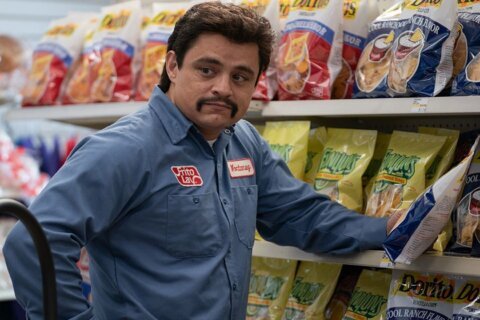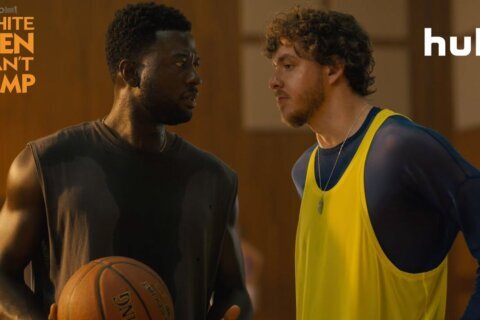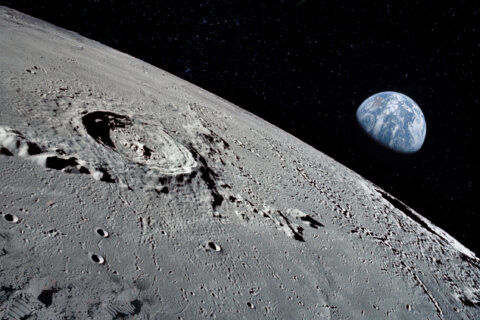WASHINGTON – He’s back in the saddle again, out where a kemosabe is a friend. And he’s so beloved, we’ll watch him ride any horse, whether it’s gloriously into the sunset, or right into the ground.
Johnny Depp shifts from swashbuckler to gunslinger, Yo-Ho to Hi-Yo, Long John Silver to Hi-yo Silver. That’s right, Capt. Jack Sparrow now wears a stuffed crow on his head, as he reunites with director Gore Verbinski and producer Jerry Bruckheimer in an attempt to recapture the magic of “Pirates of the Caribbean” (2003-2015).
“The Lone Ranger” isn’t based on a Disneyland theme park ride, but rather a classic piece of Americana that successfully made the leap from 1930s radio to 1950s television, peppering pop culture with images of a masked man riding to the “William Tell Overture.”
The July 3 release marks the first time The Lone Ranger has ridden his not-so- trusty Silver-screen horse in 32 years, banished since “The Legend of the Lone Ranger” flopped in 1981. This fatally flawed, wonderfully mad flick may very well flop, too, as the masked vigilante isn’t given top billing and doesn’t even become The Lone Ranger until the very end. Which begs a question repeatedly asked by the surrounding characters, “What’s with the mask?” That’s to say, why is Disney masking the fact that this movie isn’t about The Lone Ranger? This one belongs to Tonto.
With a touch of “The Princess Bride” (1987) and a wink at “Little Big Man” (1970), the film uses the framing device of a wise elder recounting his tale to an impressionable young boy. Here, it’s a child wearing a Lone Ranger mask into a 1933 San Francisco carnival tent, only to encounter a museum “statue” of a Native American labeled with the antiquated term “The Noble Savage.” Suddenly, this figure comes to life as the 100-year-old spirit warrior Tonto (Depp), who’s ready to recount his tale of old pal John Reid aka The Lone Ranger (Armie Hammer), who in 1859 battled the sadistic outlaw Butch Cavendish (William Fichtner) and corrupt railroad tycoon Latham Cole (Tom Wilkinson).
Controversy is already brewing over Disney casting Depp as a Native American, just as it crafted “Pocahontas” (1995) with Anglo-Saxon features despite a “Colors of the Wind” message. This time, Disney hired an actual Comanche consultant, William “Two-Raven” Voelker, who approved the face-paint look of artist Kirby Sattler. The reaction from the Native American community has been mixed, with leaders of the Navajo Nation expressing support, and plenty of bloggers crying foul.
While ’50s actor Jay Silverheels was an actual Canadian Mohawk First Nations member, Depp has pushed back by claiming Native American heritage on his Kentucky grandmother’s side, though he’s not sure whether he’s Cherokee or Creek. I don’t fault Depp for trying to get out in front of the criticism. My great-great grandmother, too, was full-blooded Cherokee, but I could never claim to know what it was like to grow up Native American. All we can do is offer the benefit of the doubt, and it appears Depp’s heart is in the right place (In his chest. The distinction matters here. More in a bit).
His charm shines through the pitfalls of excess, proving he’s one of the most versatile actors of our time. As he routinely feeds the dead bird sitting atop his head, audiences can’t help but wonder: was this part of the script, or an improvised touch? It all oddly works as a reversed take on his role in Jim Jarmusch’s acid western “Dead Man” (1995). That time, Depp was the white accountant meeting an Indian named “Nobody,” who prepares him for the spiritual world.
This time, “Nobody” is a Somebody — the legendary Tonto — leaving the title character to become the nobody. Armie Hammer plays the Jimmy Stewart man-of-the-law to Depp’s John Wayne frontiersman (i.e. “The Man Who Shot Liberty Valance), but he quickly fades into the background, becoming just one more fine actor in a string of supporting roles: William Fichtner (“Armageddon”), Tom Wilkinson (“Michael Clayton”), Barry Pepper (“Saving Private Ryan”) and, rocking a wooden leg that doubles as a weapon, Helena Bonham Carter (“Fight Club”). Oh, and let’s not forget the magical white horse Silver, who is cross-bred here with Pegasus, able to appear anywhere at any time.
Hammer has real potential, as we saw playing *both* Winklevoss twins in “The Social Network” (2010). But his talent goes untapped like last year’s mess “Mirror Mirror” (2012), where he drank a puppy potion and acted like a dog. This has less to do with Hammer and more to do with the unbalanced script, which offers too much origin story and not enough Lone Ranger.
Luckily, Verbinski picks up the slack with real directorial vision. He nails slow disclosure, showing Hammer waking up in a close-up, only to reveal that he’s atop a giant mountain. He uses creative camera setups, like a moving inverted shot as Depp rides a train upside down. And he playfully moves in and out of the framing device, freeze-framing Depp in mid-air (think “Butch & Sundance,” but during the cliff jump), forcing his turn to the camera to answer the young boy’s question. The fourth-wall is shattered so often that I expected Depp to crawl through the screen like Jeff Daniels in “Purple Rose of Cairo” (1985) or the creepy girl in Verbinski’s horror remake “The Ring” (2002).
Unlike the quick-cutting of “Man of Steel” (2013), every action beat is easy to follow. Verbinski constructs a pair of electric opening and closing train chases that mix the sort of action/adventure and comedic timing that Buster Keaton pioneered in “The General” (1927) and Spielberg modernized in “Raiders of the Lost Ark” (1981). It’s all set against the Monument Valley backdrop made famous by so many John Ford masterpieces, the morality of “The Searchers” (1956) echoing off the landscape.
Underneath it all is an upbeat score by Hans Zimmer (“Gladiator,” “Pirates of the Caribbean”), who mixes the classic “Lone Ranger” theme (originally from Gioachino Rossini’s “William Tell Overture”) with original music, including an uncanny resemblance to James Horner’s “Field of Dreams” score.
That doesn’t mean it will provide hours of father-son bonding. Verbinski and Depp may have combined for an Oscar-winning western in the animated “Rango” (2011), but “The Lone Ranger” (PG-13) isn’t for kids. The film is actually quite dark for the Disney brand, from flesh-eating “Monty Python” rabbits, to a villain that not only rips out a heart, but eats it (take that, “Temple of Doom”).
The social commentary attempts on race, religion, justice, corruption, Manifest Destiny and the rape of natural resources will fly over children’s heads.
Most of all, the runtime will leave kids squirming in their seats, along with parents who feel the drag by association. At 2 1/2 hours, “The Lone Ranger” is like getting together with a rambunctious old friend who overstays his welcome. You talk about the good old days, have some really good laughs, even a few surprises, but after a while, things get rowdy and it’s time to send the kids to bed.
And so, this one’s an easy target for critics to pile upon as a big-budget, Fourth of July disaster. But with so many critics piling on the “flop” bandwagon, someone has to circle the wagons for the mad genius behind the madness. “The Lone Ranger” is too bloated to be anywhere near great, but Verbinski and Depp at least have the guts to *try* something different in a flick that’s at once a throwback, yet weirdly “outside the box.” In a world of so many safe, predictable summer blockbusters, they deserve credit for pushing the limits of their Disney parameters, scrapping the cookie-cutter meal it could have been and injecting a spicy shot of Wasabi Kemosabe.
Disney should reprint the posters with a new title and tagline.
New title: “The Lone Tonto.”
New tagline: “See it with an open mind, just without the kids.”
★ ★ ★
The above rating is based on a 4-star scale. Follow WTOP Film Critic Jason Fraley on Twitter @AboveTheJFray, read his blog at The Film Spectrum or listen every Friday morning on WTOP Radio 103.5 FM.








